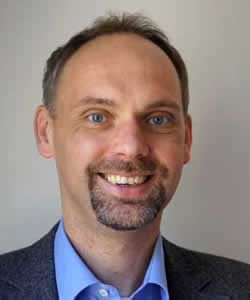I concluded my last post on Manila 1960 with two questions: Why did Manila 1960 take place under the peculiar circumstances described so far? And why did Manila 1960 remain a forgotten episode in the history of Interreligious Dialogue? Let me answer with two simple statements: Interreligious Dialogue is inseparable from the political field, and Manila 1960 was forgotten because a new religious elite rose to take control of Interreligious Dialogue.
Interreligious Dialogue is Indebted to the Political Field
In the case of the Manila meeting, the significance of the political setting is perfectly transparent.
First, the impulse to organize the encounter was given by a highly political institution, UNESCO, which at the time was still strongly influenced by the secular policy articulated by Julian Huxley, its first director-general, in his 1946 book, UNESCO: Its Purposes and Philosophy (London 1947, and just re-printed in 2010). Second, the meeting was set inside the context of a ten-year plan to promote mutual understanding between East and West and this—in the late 1950s—had primarily no religious connotation. “East-West-relations” were first of all political power relations.
As soon as one looks beyond the Manila episode, this aspect of Interreligious Dialogue becomes even more obvious. From the 1960s onwards, the efforts of the United Nations in Interreligious Dialogue were overtaken by the activities of numerous inter-religious institutions that came to specialize in Interreligious Dialogue. To name but a few examples: The Temple of Understanding (1960), World Conference of Religions for Peace (Kyoto 1970), Committee of Religious Non-Governmental Organizations at the United Nations (1972), World Council of Religious Leaders / Millennium Peace Summit (2002), Tripartite Forum on Interfaith Cooperation for Peace (2005), and the Initiative for a UN Decade of Interreligious and Intercultural Dialogue (2006)
All these institutions cooperate intensively with the UN. At the same time, they more or less follow their own agenda—most frequently centered around peace issues. And they do this on three levels: On the level of high-ranking religious representatives that are committed to those institutions (either ex officio or out of personal conviction), on the level of “inter-religious experts” who are quite frequently in salaried employment with those institutions, and finally on the level of individual activists linked to those institutions by different networks and quite often without any formal religious qualification (the ominous “people on the ground”).
The establishment of those institutions can be interpreted in at least two ways. One way is as a religious “usurpation” of the political field, an argument recently put forward by Jeanne Favret-Saada (in Jeux d’ombres sur la scène de l’ONU: Droits humains et laïcité, Paris 2010). Another way is as a “politicization” of religious debates, as critically discussed by Catherine Cornille (in The Im-Possibility of Interreligious Dialogue, New York 2008). Regardless of which interpretation one wants to follow, Interreligious Dialogue is taking place on the border of the religious and the political field, and it is difficult to understand one without the other.
In front of this background, however, a second question becomes even more interesting and important: If Manila 1960 really stands at the beginning of a loose though increasingly important tradition of this type of encounter, why is it more or less forgotten?
A New Religious Elite Commandeered Interreligious Dialogue
The participants in Manila 1960 were certainly no representative sample of religious believers. They held over-average academic degrees and positions. They were closely linked to Western academia, even though they came from different parts of the world. And they were embedded in the milieu of international diplomacy and cooperation that Pax Romana and UNESCO represented from the late 1940s up to the early 1960s.
So the Manila conference brought together representatives of a rather distinct section of society with links to religious, political and academic milieus, alike.
Their respective intellectual skills notwithstanding, those people were neither formal religious representatives nor experts in Interreligious Dialogue—neither in terms of training, nor in an institutional sense of the word. All of them were obviously religiously committed and informed. All of them had experiences in religious encounters. But they were not linked to any of the inter-religious institutions that were about to emerge from the mid-1960s onwards inside global civil society. In a way, they belonged to an “old guard” of international diplomats who became interested in inter-religious encounters, rather than inter-religious activists seeking to shape international politics.
And this was probably the reason why the protagonists of Manila 1960 were to be forgotten in the first place. They stand between two phases of inter-religious encounters. They foreshadowed future developments and were at the same time still linked to an older generation.
If this is true, the Manila episode tells us as much about the past as the present-day state of Interreligious Dialogue. It stands for the long tradition of elite approaches to inter-religious encounter. More episodes outside these meetings of experts and elites need to be uncovered and recounted—in their official and unofficial versions—in order to arrive at a complete picture of this important history.

